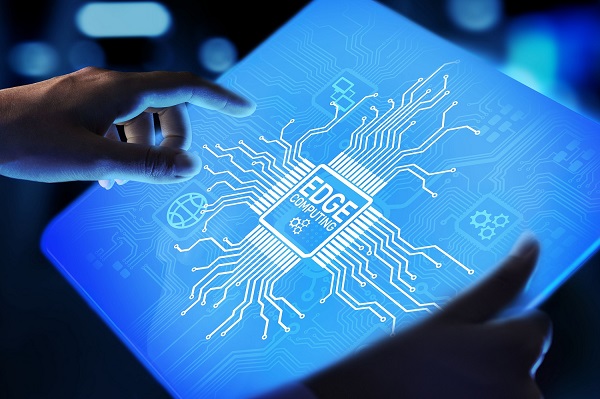
The combination of edge computing and cloud servers has emerged as a game-changer in the technology field, ushering in a new era in computer architecture.
This technological convergence is expected to bring about a paradigm shift in favor of an infrastructure that is more effective, responsive, and scalable. It is revolutionizing how data is processed, stored, and delivered.
In this article, we will talk about how next-gen architecture harmonizes edge computing and cloud migration services.
The Development of Cloud Servers and Edge Computing
1: Explaining Edge Computing
An alternative to the conventional centralized cloud model is edge computing. Edge computing moves processing power closer to the location where data is generated, as opposed to depending only on remote data centers.
Devices at the “edge” of the network, like IoT devices, sensors, and mobile devices, process data locally at first to reduce latency and bandwidth usage.
2: Cloud Servers’ Widespread Use
On the other hand, cloud servers have long served as the foundation of contemporary computing. The capacity to remotely store, process, and retrieve enormous volumes of data has revolutionized how people use services and how businesses run.
However, difficulties such as latency, bandwidth limitations, and the requirement for real-time processing have spurred research into alternative architectures.
The Hybrid Relationship: Cloud Servers and Edge Computing
1: Getting the Most Out of Workloads
Integrating edge computing with cloud servers is shown to be a powerful solution in the pursuit of peak performance. Cloud servers handle workloads requiring a lot of resources, while edge devices handle time-sensitive tasks. Applications can function flawlessly over a dispersed network due to this division of labor, which also improves efficiency.
2: Improving User Experience and Cutting Latency
Edge computing offers several benefits, one of which is its reduced latency. Response times are greatly decreased when data is processed closer to the source. When combined with cloud servers, which offer the scalability and storage capacity required, this setup improves the user experience for applications that require instantaneous response times.
3: Allocation of Dynamic Resources
The symbiotic link between edge computing and cloud servers allows for dynamic resource allocation based on workload requirements and network circumstances. Edge devices can offload processing activities to cloud servers during peak usage times or when more computational resources are necessary.
Cloud servers, on the other hand, can assign fewer time-sensitive activities to edge devices, maximizing resource efficiency and ensuring optimal performance across the distributed network.
4: Improved Position for Security
The integration of edge computing with cloud servers improves the infrastructure’s overall security posture. Edge devices handle data locally to reduce latency, whereas cloud servers provide strong security features like encryption, authentication, and intrusion detection.
Organizations can limit potential security threats and vulnerabilities by implementing a defence-in-depth strategy, assuring the confidentiality, integrity, and availability of sensitive data across the distributed architecture.
5: Both scalability and flexibility
Unmatched scalability offered by cloud servers enables businesses to quickly adapt to shifting workload demands. The inclusion of edge computing enhances this scalability by intelligently spreading computational activities. This dynamic resource allocation ensures that the system is adaptable and economical in meeting changing demands.
6: Availability and Sturdiness of Data
The integration of edge computing and cloud servers improves data redundancy and resilience. While edge devices handle local processing and storage, cloud servers act as backup repositories, ensuring data integrity and availability in the case of device failure or network outages. This redundancy technique reduces the risk of data loss while protecting crucial information from unforeseen scenarios.
Applications in the Real World
- IoT in Industry
Businesses are utilizing cloud servers and edge computing together to increase productivity and efficiency. While cloud servers examine past data to forecast maintenance requirements and enhance production procedures, edge devices integrated into manufacturing equipment can offer immediate feedback on operational status.
- Intelligent Cities
Smart cities are being created by the harmonious fusion of cloud servers and edge computing. Within this networked ecosystem, edge devices track and analyze real-time pollution, traffic, and energy usage data.
Cloud servers, in turn, aggregate and analyze this information, providing city planners with valuable insights for sustainable development and efficient resource allocation.
- Medical care
The combination of cloud servers and edge computing has enormous implications for the healthcare industry. Wearable health monitors are examples of edge devices that can process and send patient data instantly.
Healthcare practitioners can monitor patients remotely, use predictive analytics, and make timely decisions by storing and analyzing this data securely on cloud servers.
Resolving Issues and Challenges
1: Interoperability and Standardization
Standardization and interoperability present a challenge to the industry as edge computing and cloud servers integrate more and more. Establishing common protocols and frameworks is essential to ensure seamless communication and compatibility between diverse devices and cloud platforms.
2: Privacy and Security
The decentralized architecture of edge computing raises concerns about data security and privacy. The task facing industry stakeholders is to strike a balance between the benefits of localized processing and the requirement for strong security measures. Encryption, secure communication protocols, and stringent access controls are crucial components of a comprehensive security strategy.
3: Management of Edge Infrastructure
Managing a distributed infrastructure that includes both edge devices and cloud servers requires sophisticated tools and frameworks. Network-wide deployment, updates, and troubleshooting can only be streamlined with effective orchestration and monitoring systems.
Prospects for the Future and Rising Trends
Edge-based Programs
Developers are increasingly adopting an edge-native approach, designing applications specifically tailored for edge computing environments. This change entails maximizing the benefits of being close to data sources by optimizing applications for low-latency, high-throughput scenarios. In this case, cloud servers serve as auxiliary infrastructure for jobs that are better served by centralized processing.
The Boundaries of Artificial Intelligence
The infusion of artificial intelligence (AI) at the edge is a trend that holds immense potential. Edge devices equipped with AI capabilities can process and analyze data locally, reducing the need for constant communication with cloud servers.
This not only enhances response times but also minimizes bandwidth requirements, making AI-driven applications more efficient and responsive.
Integration of Edge-Cloud and 5G
The rollout of 5G networks is set to catalyze the synergy between edge computing and cloud servers. Cloud servers can be seamlessly integrated with 5G’s high-speed, low-latency capabilities, which complement edge computing’s decentralized processing.
This union is poised to unlock new possibilities for immersive experiences, real-time applications, and unprecedented connectivity.
To Sum Up
An important turning point in the development of computing architecture has been reached with the union of edge computing and cloud servers. This mutually beneficial partnership tackles the shortcomings of each strategy separately, providing a comprehensive resolution that blends the advantages of both. This is evident as we watch this next-generation architecture come to life.




